TREES
(eight of them)
Yesterday I went to my old hangout, The Ohio State University at Marion. There’s a prairie there, where I’m helping in a statewide effort to produce a catalog and atlas of bees. The procedure is simple. Once a week I go there and set out 24 little colored bowels of soapy water, and then the very next day, pour off all the poor bees that drowned thinking they were flowers i guess, and taking them home to freeze and eventually turn in to the project coordinator. Here’s an aerial view of the campus prairie.
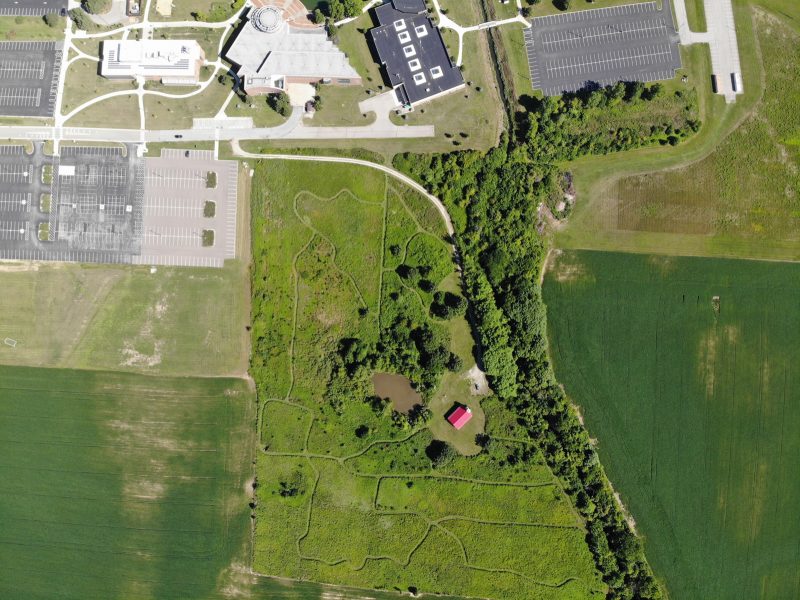
Aerial view of the Ohio State-Marion campus prairie.
There are trees there. Who knew? As Gabriel Popkin explained so well in her article (LINK), a lot of otherwise well-educated people are “tree blind.” I’m a botanist, so I guess I’m somewhat less tree blind than most folks, but still have a lot to learn, especially about oaks and hickories …and pines …and hawthorns, and…
Although it seems like an odd thing for an environmentalist tree-hugger to be doing, during many of the trips to the prairie for the bee survey I actually do a lot of tree killing! That’s because a prairie is a treeless area, one that is dominated by non-woody grasses and wildflowers. The trees threaten to make the prairie be no longer a prairie, and woody vegetation is controlled by cutting and painting the stumps with herbicide. So some of the trees shown here, such as the elm and hawthorn are the targets of our restoration efforts. Others, such as the wetland willows and cottonwood growing along the pond margins are tolerated, while the majestic bur oak (a prairie tree) is revered.
Tree of Heaven
(Ailanthus altissima)
Bad tree. Bad. Along the entrance road to the prairie, between it and the ditch-like “Graves Creek” is a large, and growing, stand of tree of heaven. This is a super fast-growing and weedy species native to Asia. Petrides, in Peterson’s Field Guide to Trees and Shrubs, tells us it is the most rapidly growing woody plant in our area, with sprouts as long at 12 feet coming up from spots where trees have been cut down.
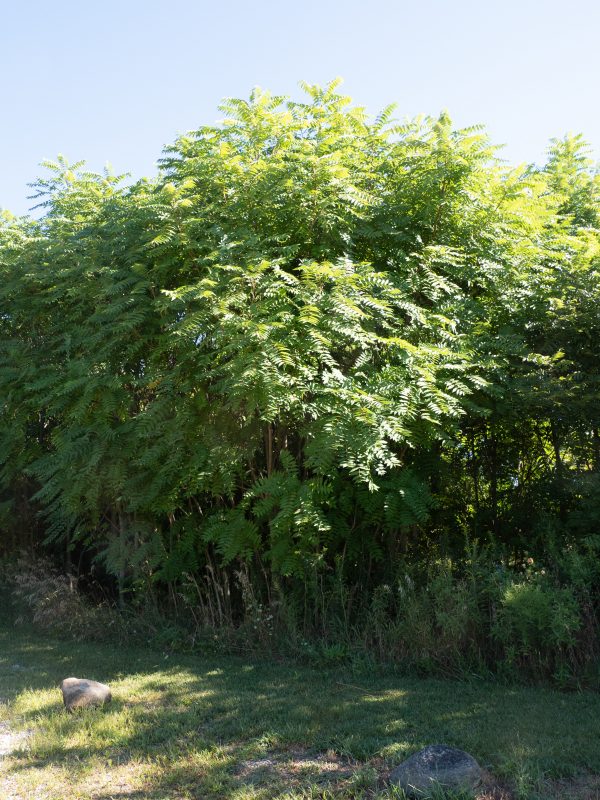
A dense stand of tree of heaven.
August 30, 2020 at OSU-MArion campus prairie.
Leaf-wise, this tree looks a lot like black walnut –large, pinnately compound.
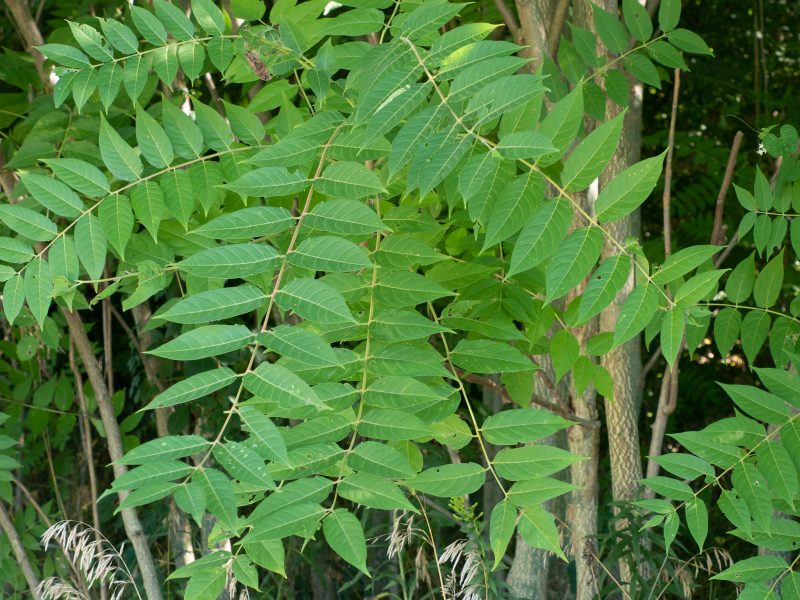
Tree-of-heaven leaves are large and pnnately compound, reminiscent of black walnut.
A subtle but distinctive feature of its leaves are the single pimple-like “glands” that are located on each side of the leaflets, at their bases.

Glands at the base of the leaflets.
The tree was extensively planed in urban areas because it its tolerance of harsh conditions. Now tree-of-heaven is a problem invader of forested natural areas.
Eastern Cottonwood
(Populus deltoides)
At the prairie and elsewhere, cottonwood is a denizen of wet sites such as ditches, and as in this instance, pond margins. Here seen alongside ash, the cottonwood has a distinctive columnar shape.

Ash (left) and cottonwood (right, obviously) growing at the edge of a pond.
This is a fast-growing lowland species, in the same genus (Populus) as aspen. Here’s a tree joke: Question: Why do places like Indonesia, India and China have so many aspen and cottonwood trees? Answer: Because those are very Populus places!
Eastern cottonwood leaves are distinctively triangular. The specific epithet “deltoides” in in reference to the leaf shape.
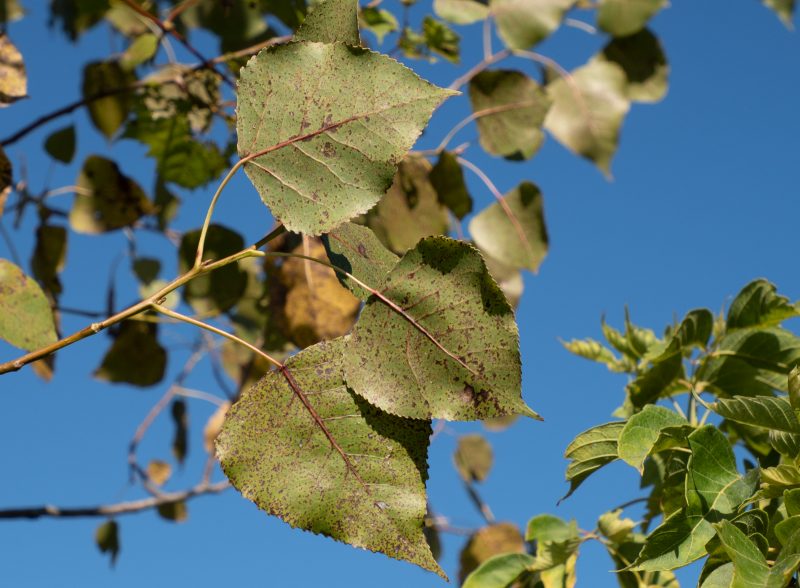
Eastern cottonwood leaves are indeed deltoid (triangular).
Aspen and cottonwood leaves tremble in the slightest breeze because they have flattened petioles. (I call them “linguine leafstalks.”)
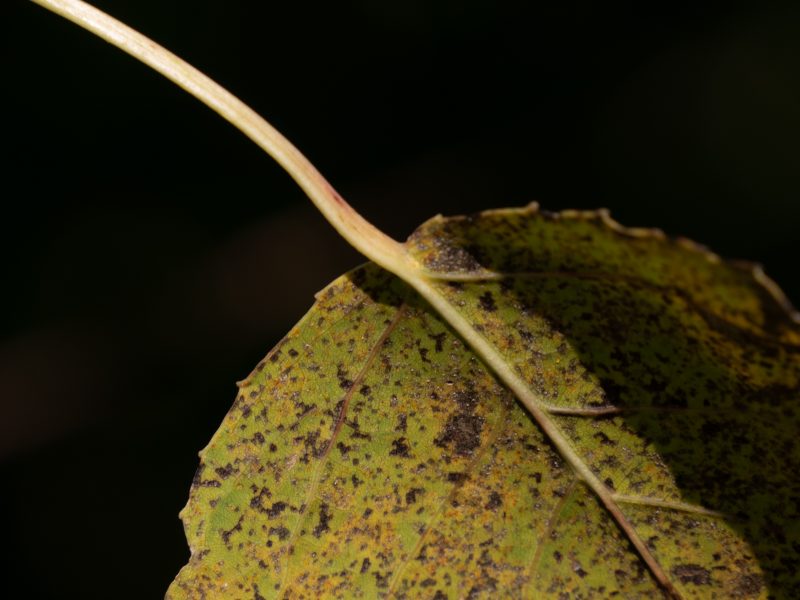
Linguine leafstalks!
Green Ash
(Fraxinus pennsylvanica)
Growing snug against the cotonwood is this grren ash. Ashes are (except for the weird boxelder maple, sometimes thus called “ash-leaved maple”) our only trees with opposite pinnately compound leaves.
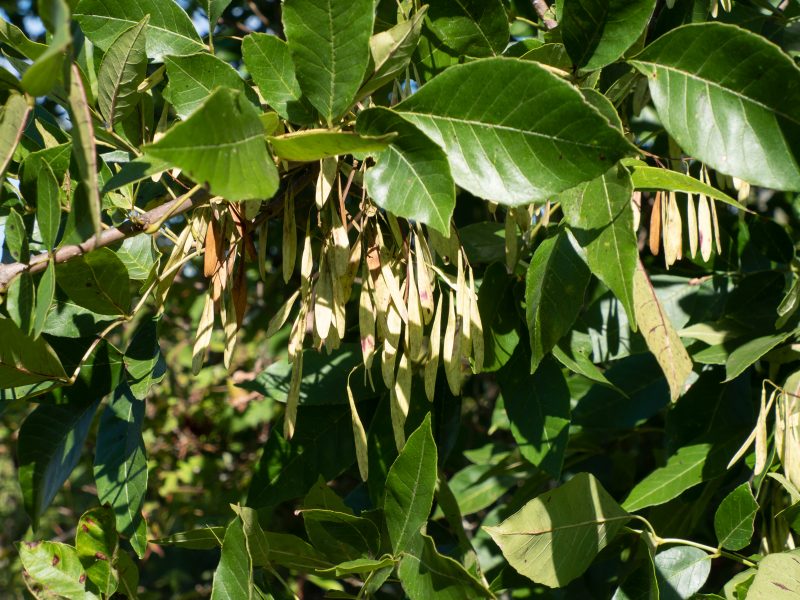
Gren ash. Note the single samaras.
American elm
(Ulmus americana)
Elm (genus Ulmus) have leaves that are simple in complexity, with a doubly-serrate margin, and a peculiarly unequal-sided leaf base. There are two common species in Ohio –American elm (U. americana) and red/slippery elm, U. rubra. They are quite similar. Red elm leaves are more scratchy above than are those of American elm, and there are also some differences in the bark and the fruits.

Elm leaves are doubly serrate.
Mature open-grown elms have a characteristic feather-duster or wineglass shape. In this sapling, that is just beginning to be evident.
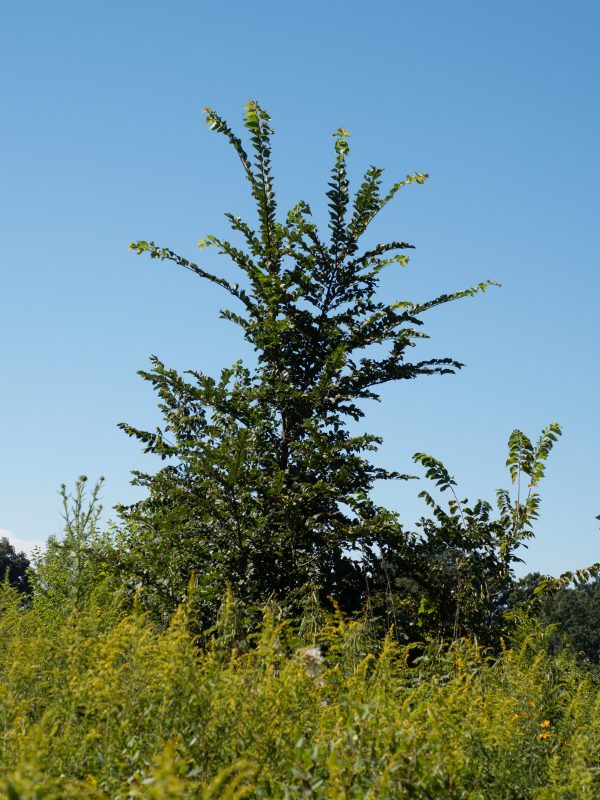
Elms look like upside-down feather-dusters.
In North America, elm tree populations are a mere remnant of what they once were. As explained very well by the Morton Arboretum, the disease –which is probably of Asiatic, not Dutch, origin was accidentally introduced to the U.S. in the 1930’s. It is a fungus that is carried by two species of bark beetles. All of our native elms are susceptible. The fungus blocks the water-carrying xylem tissue, causing affected branches to wilt and die. Because elms reproduce at an early age, there are still elms around, just not many forest giants like there once were. In her “tree blindness” article, Popkin mentions several other introduced tree pathogens, citing primarily the emerald ash borer as a consequence of global trade, whicj is noted to be “only the latest iteration of this sad story; chestnuts, hemlocks and elms have already taken major hits from foreign pests.”
Silver maple
(Acer saccharinum)
The “M” in “Madcaphorse (the memory hint for trees with opposite leaves), maples have opposite leaves. In our area all but one (boxelder maple) have simple leaves that are palmately lobed. This small shrub-like sapling was growing at the very edge of the pond, a testament to its typical wetland affinities.
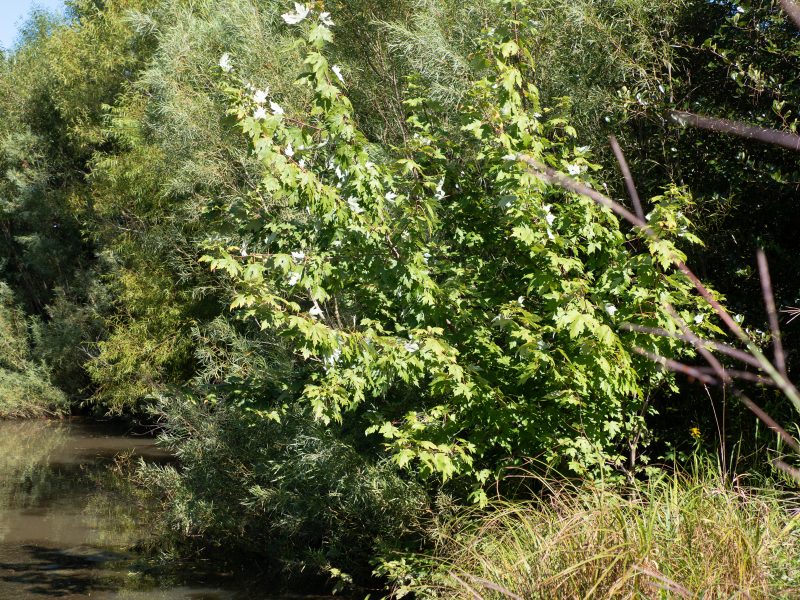
Silver maple likes it wet.
Silver maple, along with red maple (Acer rubrum) is in the “soft maple” group, having softer wood than other maples, early maturing fruit, and leaves that are distinctly whitened beneath.
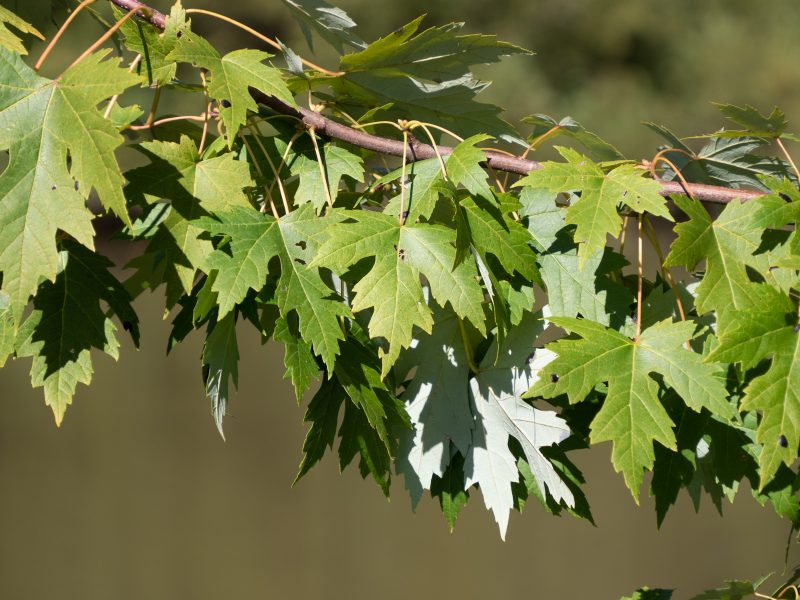
silver maple leaves are whitened beneath.
White Mulberry
(Morus alba)
This is one of the trees we are trying hard to eliminate from the prairie. It is widespread, fast growing, and tenacious.
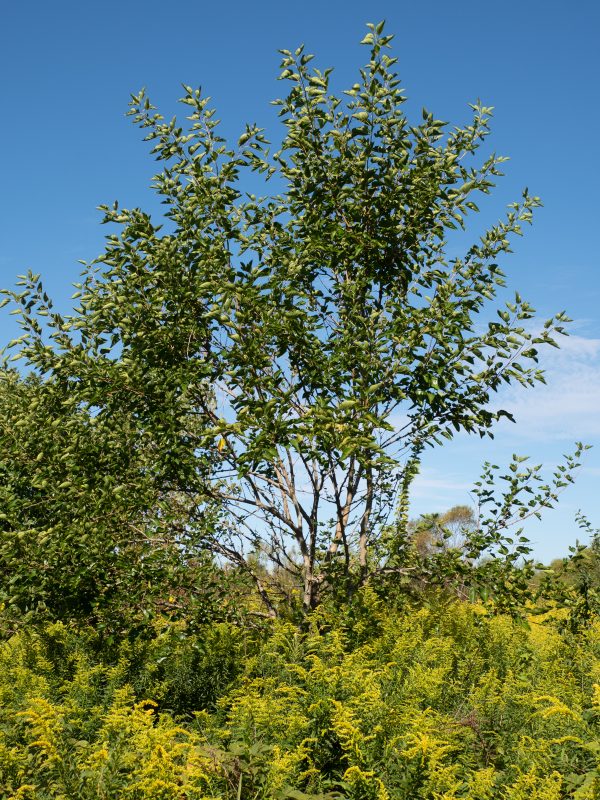
White mulberry is an aggressive weed.
Mulberry leaves are coarsely serrate, with an outline that is variable. Some leaves are unlobed, others have a single large lobe, and a few have two or more lobes.
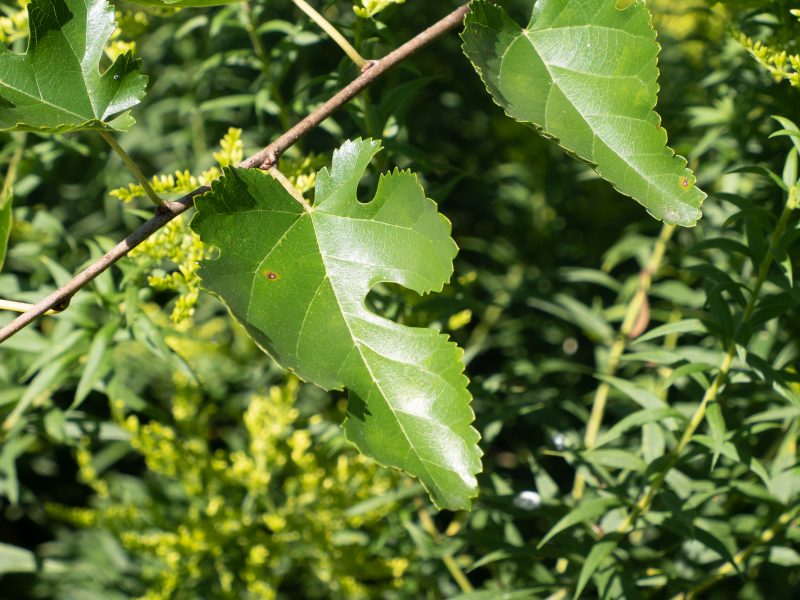
Mulberry leaves are serrate and sometimes —but not always –lobed.
Mulberry leaves are the food for silkworm caterpillars, and it is for thatg reaso they were brought to the Americas during the colonial period, to establish a silkworm industry that ultimately proved unsuccessful.
Cockspur hawthorn
(Crataegus crus-galli)
Ouch! These guys are thorny. And the thorns are stout, and sharp. Hawthorns are members of the rose family, in the same subgroup that contains apples and pear, defined by producing a pome type fruit. The pomes of hawthorns often remain on the plant all winter long, and so are important food for birds and other wildlife.
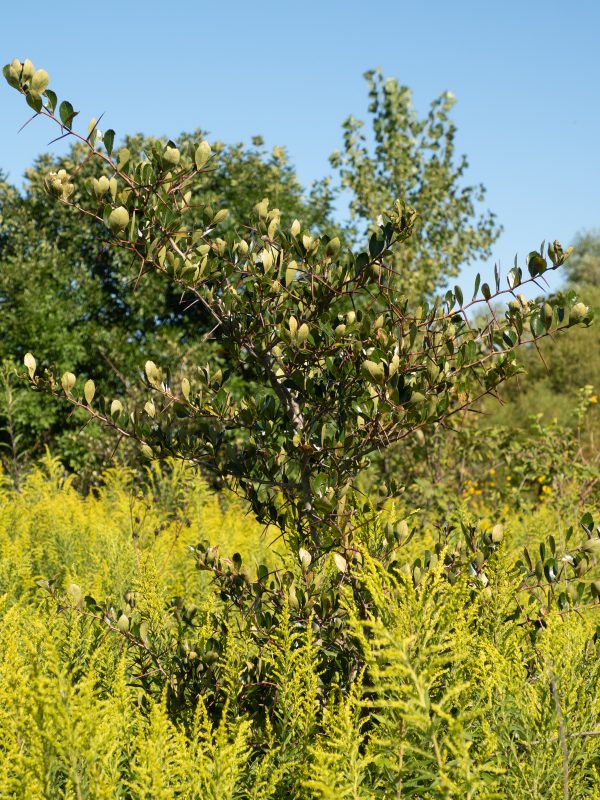
Hawthorns are common in the prairie…not for long though!
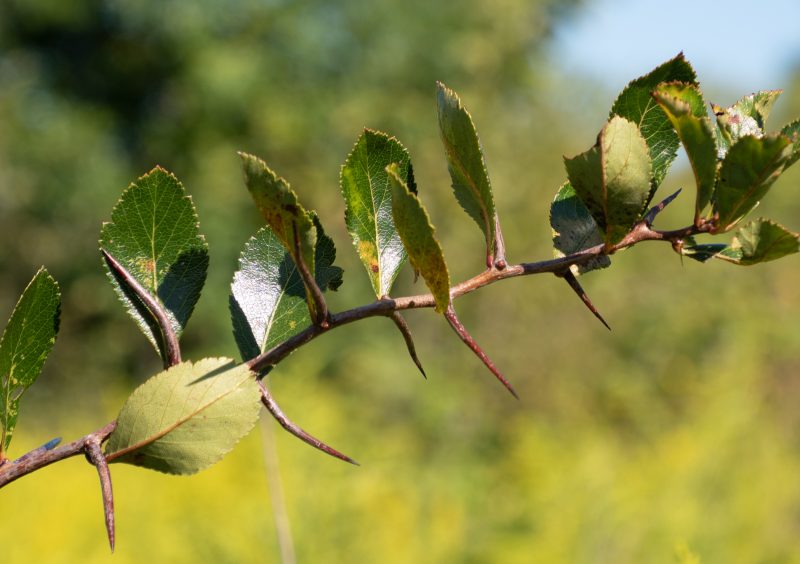
Hawthorn has stout thorns; these are modified branches.
Petrides tells us that the name “haw” comes from the same linguistic root as “hedge,’ and that indeed these have been planted as hedges. The thorns make them nearly impenetrable. Ouch!
Bur oak
(Quercus macrocarpa)
Bur oak is a tree that grows in prairies sometimes, but doesn’t dominate them to become forests. Rather, they often occur as scattered trees in an otherwise grassy landscape, an community type called “savanna.” The oaks at the OSU-Marion prairie were planted in a pattern that replicates their arrangement as a nearby natural area, Daughmer Bur Oak Savanna, located one county to the north, Crawford County.
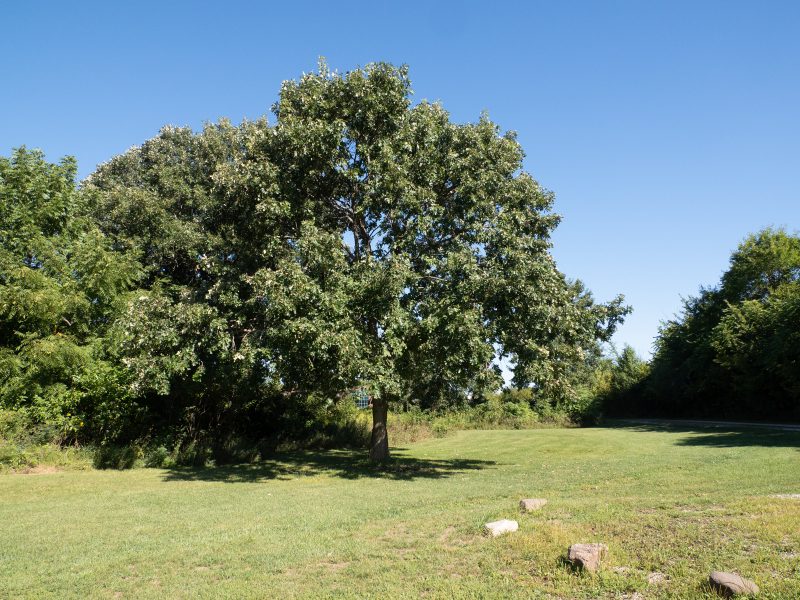
Bur oak.
The specific epithet of bur oak is macrocarpa, meaning “big fruit.” That’s a apt term. It’s a member of the white oak group. The leaves have rounded lobes, and the acorns mature in just one year (red oak acorns take two years).
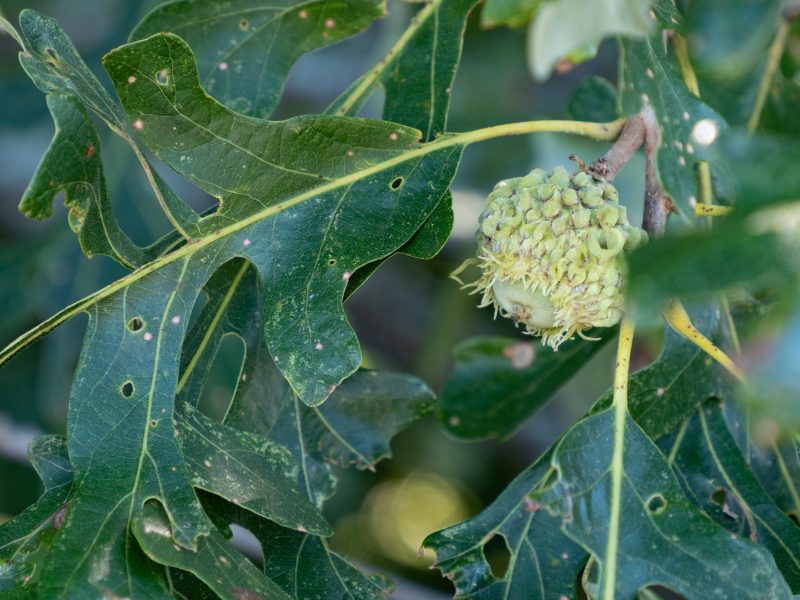
Bur oak acorns are especially large, hence the specific epithet, meaning “large fruited.”
Crack Willow
(Salix fragilis)
Willows have narrow leaves. They grow in wet places.
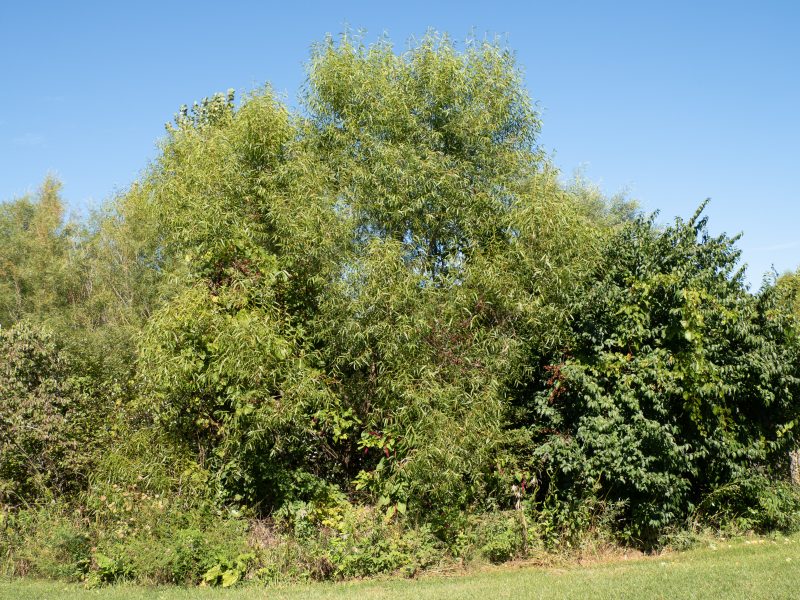
Crack willow at the pond border.
The dominant tree willow here is crack willow, an introduced species. It’s named that because it has brittle branches.
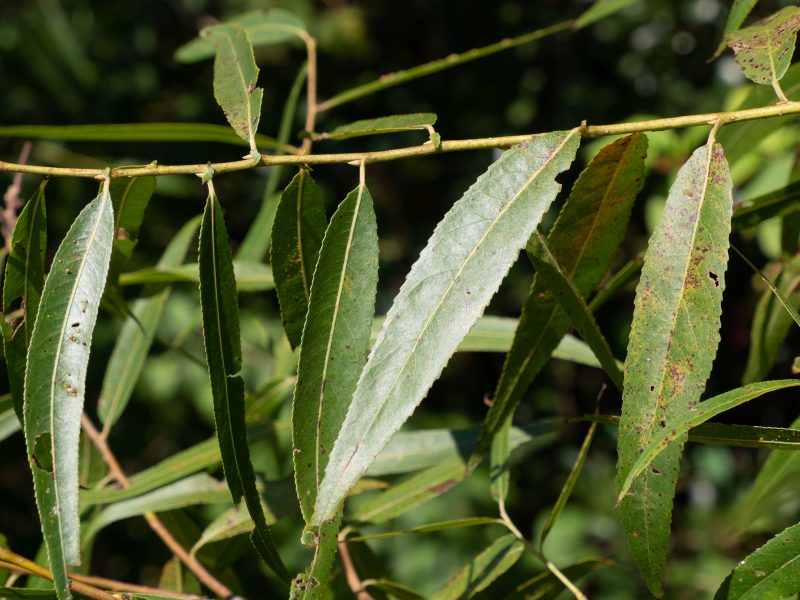
Willows have narrow leaves.
Crack will branches are very brittle, breaking off with the merest puch.This is a means of asexual reproduction. See here a main branch after several brittle lateral branches have been snapped off.
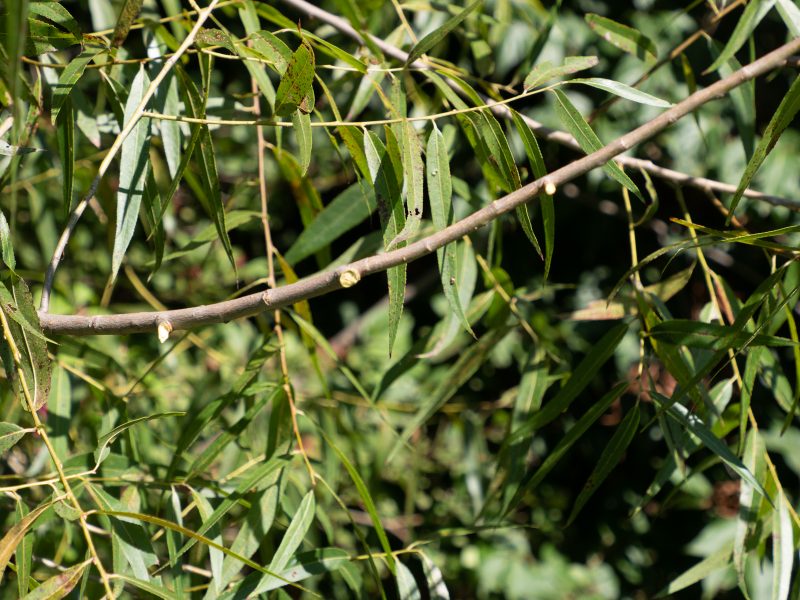
Crack willow is fragile.
